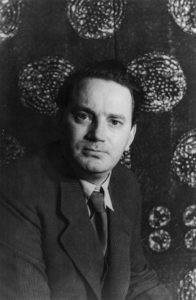“Books aren’t written – they’re rewritten.” ― Michael Crichton

Thomas Wolfe, a writer who was greatly attached to each sentence he wrote. Max Perkins was his editor.
We are fresh off an intense six months of editing for our latest publication, The House in Prague, by Anna Nessy Perlberg. Anna (an octogenarian whom I came to love) is her own fiercest critic and a remarkably objective self-editor. The manuscript she submitted last December was pretty tight. Nevertheless, we took her memoir apart scene by scene, changing POV, reordering, and generally having a grand old time delving into Anna’s remarkable storehouse of memories to flesh out her characters.
Now that the book is published (and by published I mean it’s on Amazon and in the B&N catalog; Kindle and Nook are still underway), I’ve taken time to reflect on the editing process and how it differs from author to author. And here’s something I’ve noticed: most authors fall into one of four categories. Interestingly, these categories don’t necessarily correspond to writing ability, although they can sometimes predict how smoothly the editing process will go.
Category #1: The “I’ll fight you on every word” author. Yes, those were the exact words one author said to me at the beginning of our project. Fortunately, he was an excellent writer with a very well-developed style. But I’ve also worked with authors whose chops didn’t match their swagger. They were a challenge-and-a-half. But with patience and diplomacy, we saw it through.
Category #2: The “I know what I want to say, I just need help saying it” author. These authors usually have a lot of expertise in their field, but aren’t necessarily experienced writers. Google Drive is my biggest ally here. We log in to the manuscript together, I ask clarifying questions and transcribe the answers into the text, then I take it from there. It’s almost co-writing, but I work very hard to stay in the background and retain the author’s unique voice.
Category #3: The “I’m going to be brave and let you do this even though it really hurts” author. I feel their pain; when I’m edited, this is how I react, too. I honor their courage because I know they are enduring the pain of editing for the sake of the work. These authors do better if we stay closely connected. But once we really get into the trenches together, it’s never as bad as they had feared.
Category #4: The nearly objective, “I can take it, so go ahead and dish it out” author. When authors first present themselves this way, I’m a little skeptical. But if, after a few rounds, I can tell they really mean it, we can experiment, try things, and be frank with each other about whether they worked or not. And when something really works, we usually both know it immediately.
I think that about covers the territory, although there are surely variations on each theme. If you’re a writer, what category do you see yourself in? If you’re an editor, what would you add?
Image credit here.

Comments are closed.